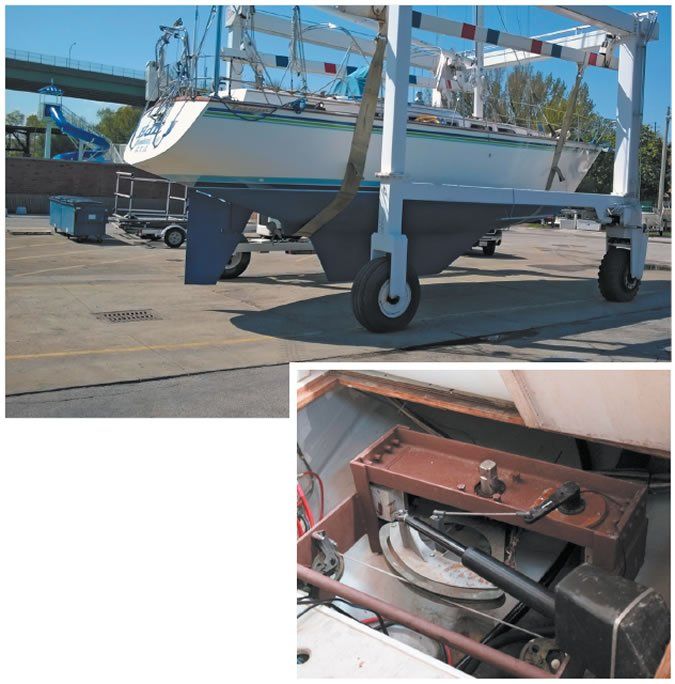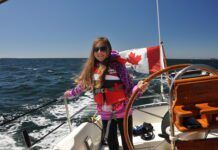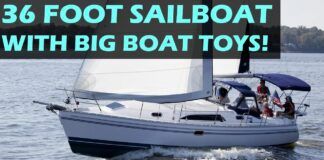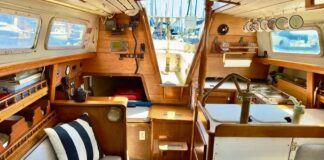The Endeavour 42 is relatively heavily built to charter-boat scan’tlings, but inconsistencies between hulls means there will be some variability in quality. The biggest refit challenge is the fuel tank (see main story).

Hull: The hull is sandwich core construction of one-inch balsa grain balsa core between laminates of polyester resin and fiberglass reinforced plastic (FRP). The FRP is woven roving and multi-directional chopped strand fiber (MCSF). The hull is not infused, resulting in a high resin-to-fiber ratio and -we suspect-some voids in the balsa kerfs. Because of this, we recommend only white, or off-white when repainting for use in a warm climate.
Keel & ballast: The keel is molded integrally with the hull and ballast. Cast lead blocks for ballast (although signs of iron have cropped up on at least one hull) are bonded in place with polyester resin, then capped with layer of woven roven. When finished, the ballast becomes a structural part of the hull. The construction eliminates risk of keel-bolt failure in external lead keel, but requires full-length support when blocking the boat for storage on land.
Deck: The deck is molded in one piece using polyester resin and fiberglass woven roving and MCSF. Plywood coring provides additional stiffness where needed. All exterior deck surfaces are a pigmented gelcoat molded onto the fiberglass.
Hull-deck joint: The hull-deck joint is an inward-turning flange liberally coated with a slow-curing adhesive sealant as the deck is lowered down and then bolted to the hull with stainless steel bolts. A teak cap rail, also bedded in adhesive-sealant is bolted on top of that. Gaps in this seal have resulted in leaks in some boats, usually visible by prying behind cupboards.
Spars and rigging: All spars (mast, boom, and spreaders) are extruded aluminum 6061-T6 alloy, with a protective coating an all external surfaces. The mast on the E42 is stepped through the cabin roof onto the keel. The main supplier for the E42 was Isomat, now Sparcraft US, (aka Charleston Spars). Some Endeavours have Kenyon spars, or older Isomat spars (now supplied by Rig-Rite).
The forestay attaches to a welded stemhead fitting at the bow, supported and backed. Stays and shrouds are attached to the chainplates at the edge of the cabin house. The single backstay leads to a chainplate at the stern.
Rudder and steering: The rudder is molded as a single piece of solid, high-density foam with a protective skin of fiberglass, and a gelcoat finish. The stainless-steel rudder post is welded to stainless-steel blade and molded integrally with the rudder; high-density foam filler provides some stiffness. A stuffing box seals the shaft where it passes through the hull. The steering wheels chain and sprocket linkage leads to cables bolt to a massive support frame (see photo).





































